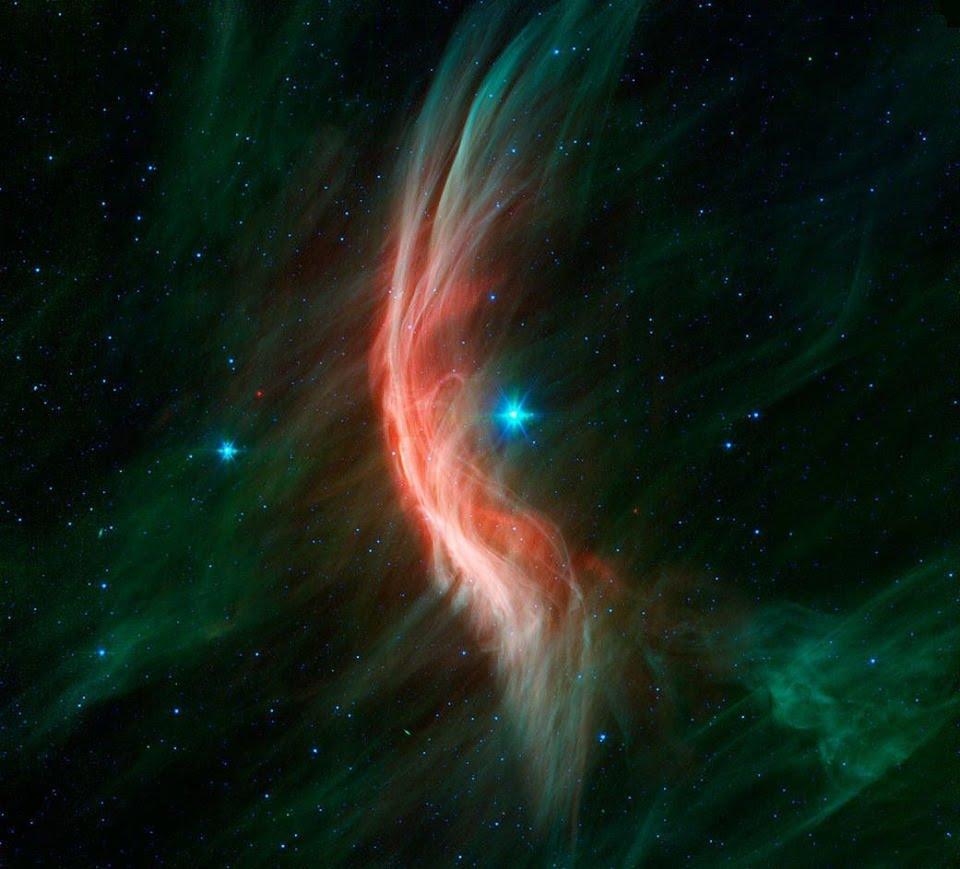Take a tour of some of the stunning, rare images captured by NASA, ESA and SETI Institute.
Gaint Star Zeta Ophiuchi and shock waves captured by Spitzer Telescope
The Spitzer Space Telescope was launched by NASA in August 2005 to observe the solar system and other galaxies. In 2010, however, liquid Helium coolant finished, rendering it unable to operate fully. But the passive cooling design has proved beneficial and the mission will end fully in January 2020.
The above Spitzer image displays the gigantic star Zeta Ophuichi and the shock wave in front of it. Visible only in infrared light, the bow shock is created by winds that flow from the star, making ripples in the surrounding dust. Located roughly 370 light-years from Earth, Zeta Ophiuchi dwarfs our Sun: It is about six times hotter, eight times wider, 20 times more massive and about 80,000 times as bright. Even at its great distance, it would be one of the brightest stars in the sky were it not largely obscured by dust clouds.
A close view of Neptune captured by Voyager- 2
This is a close view of Neptune, captured by NASA’s Voyager 2 spacecraft in 1989. It is wrapped in teal and cobalt bands of clouds of methane, showing similarity to Jupiter and Saturn.
A Dark and gloomy scene in the constellation of Gemini
This beautiful shot was captured by the NASA/ESA Hubble Space Telescope and it shows a dark and rather gloomy scene in the constellation of Gemini. Two symmetrical lobes can be seen, which make up a planetary nebula. The orangish star at the center is thought to be a remnant of a sun-like star that blasted many years ago.
Enceladus showing off its South polar plumes
This is Enceladus, the 6th largest moon of Saturn. We can observe its south polar plumes and E-ring diffusions in the astrophotograph, taken in 2006 by NASA’s Cassini Mission to Saturn.
A heartbreaking View of cloud pattern
This breathtaking view is of a cloud pattern observed over Rocky Mountain National Park, Colorado on 10th May 2019. These are lenticular clouds, formed in orographic-induced waves developing in the lee of elevated terrain. They are composed of tiny drops of water and can remain stationary for hours on end.
An illustration of underwater hydrothermal systems at Axial Seamount
Pablo Sobron, a SETI Institute physicist, along with Laurie Barge, a NASA scientist, have designed PSTAR, NASA Planetary Science and Technology from Analog Research. This is to study underwater hydrothermal systems at Axial Seamount, the largest and most active volcano on a plate.
FOR ASTROPHOTOGRAPHS LOVER, DO VISIT: https://scientiamag.org/steve-a-new-wonder-in-the-night-skies/


